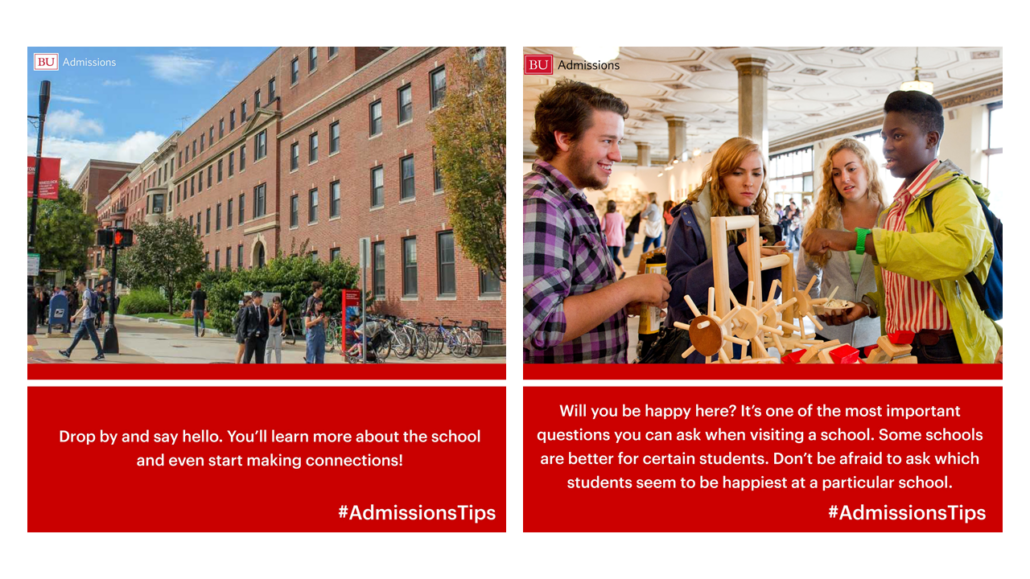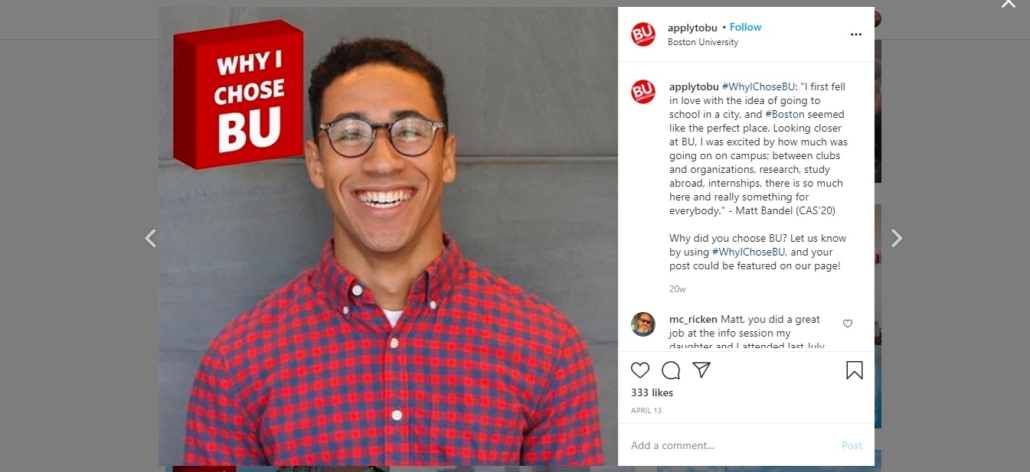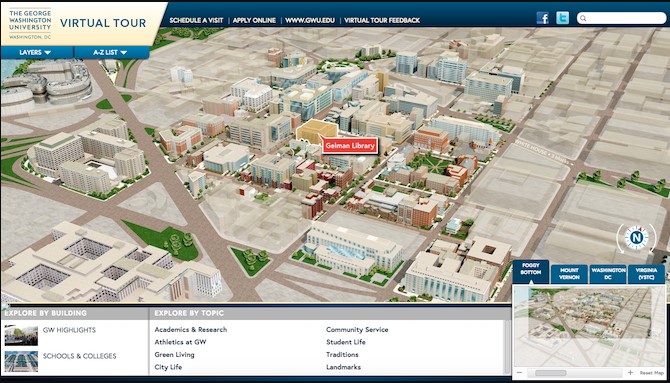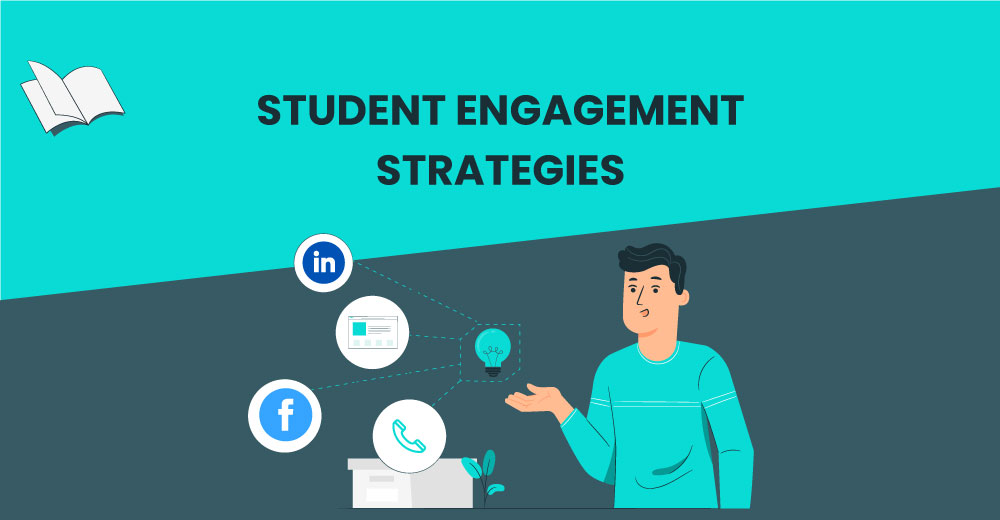A little while ago, we interacted with directors and admission heads of colleges in the US. We wanted to understand – how colleges engage with their students. Also, what are their plans to strengthen their existing student engagement strategies?
This interaction unfolded some of the most pressing challenges. And there was a common theme.

>> We want to have productive discovery conversations with students and be responsive in our outreach.
>> The admission inquiry volume is huge, and it is important for us to manage them appropriately so that we can reach out fast, consistently.
>> A disconnect in the communication channels.
>> Intense regional competition with other colleges.
– Kim Gasper, Director of Admissions, Asher College
>> Optimizing the Lead-to-enrollment time is the most important challenge for us.
>> We want our communication channels to be integrated and want templates that allow us to reach prospective students on mobile.
– Sarah Holmes, Director of Admissions, Bellus Academy

Amidst the Covid-19 pandemic, digital has become the core of admissions and learning. But colleges still lag in digital student engagement strategies across the student lifecycle.
Let us look at the proven methods to engage with students before and after enrollment. But before, a glance at the current state of education in the US.

The state of education in the US
Higher education is a career-defining path for high school graduates and adults. While adults seek college education to learn new skills, school graduates believe a bachelor’s degree will give them the best chance at finding a fulfilling, high-paying career.
Current scenario: In the backdrop of the coronavirus pandemic, a large part of the American workforce is left without jobs and are eager to gain new skills and credentials. NCES (National Center for Education Statistics) expects 19.7 million students to enroll in colleges and universities in fall 2020.
On the one hand, students pursue colleges to build their careers, and on the other, colleges also strive to select the best-fit applicants. That is why colleges are inclined to strategically attract the best talents to their institutions. Public colleges have no dearth of applicants, but private colleges put an extra effort to bring students to their campuses. Thus, how to increase enrollments has always been a concern for private colleges.

Pre-enrollment student engagement strategies
Many universities gear up only during admission seasons to address student inquiries. They also take support from call centers to handle Leads. Colleges do invest in offline and digital campaigns. But most of these channels are disconnected. Thus, organizing leads from different sources remains a challenge for admission teams.
The US Government supports federal students with financial aid for higher education. It applies to private, public, and even career schools. Whether the college assumes financial aid, eligibility, the process to avail, etc. are some of the regular queries. With much of the workforce going remote, colleges are unable to track the admission team’s progress.
Earlier, many student engagement activities involved open houses, education fairs, and campus tours. But now the students are digital natives. Students keep a tab on their preferred college via the website and social media. Both students and parents reach out to at least one person from the institution for guidance. It indicates that colleges should also prepare to support with least lag.
Key challenges to student engagement before admission
- Inability to handle voluminous queries during peak admission days leading to slow response
- Inadequate digital presence and disconnected channels
- Intense competition among institutions and unfiltered information for students
- Campus tours – that are not the same as before
- Manual admission processes that require form submission, verification, and selection
- Failure to provide a convincing response to financial aid and grants
We brainstormed over these prevailing challenges. We took inspiration from the successful student engagement strategies from leading colleges. And we came up with a 5-step plan that can speed up enrollments in your college. You can implement this plan in your existing admission process using Higher Education CRMs with the least effort.
A 5-step plan to engage with students for enrollment
1. Omnichannel and a mobile-first approach
Omnichannel refers to a cross-channel strategy to drive better relationships with prospective students. For example, a prospective student saw your ad on Instagram and clicked it for details. In another scenario, a student got to know about your college from friends. He called your administration for course details. In either case, you would want to engage with the lead and guide him through the enrollment process. This is an omnichannel approach. Omnichannel covers almost every channel. From website forms, PPC ads, education fairs, walk-ins, and email to phone inquiries.
Many colleges are also taking a mobile-first approach to communication. Nearly 84% of teenagers carry a smartphone. Students often use mobile phones to explore colleges and courses. Reaching out to students on their favorite platforms shows that you are with the trend. For example, Boston University launched a social media campaign #AdmissionTips. It engages with students on Instagram.

Their follow-up campaign narrates the stories of candidates who are enrolled and why other students should also consider the same.

The point is – having a great narrative works best when you are ready to interact with the candidates. For example, tools for enrollment management collect information from all possible sources. It then organizes them for processing in a unified database.
2. Inquiry segmentation and prioritization
Speed-to-lead is a crucial factor in improving enrollments. Contacting students within a minute of inquiry submission increases the likelihood of conversion. In this case, if you respond immediately, you can soon convert a lead into an enrolled student. Addressing every inquiry in the order received is not a good approach. It is because there is a threat of losing a strong candidate due to late response. In such scenarios, inquiry segmentation and prioritization help.
Enrollment management platforms track every interaction. Based on this information, it segments the candidate profiles. Then depending on the candidature and staff availability, the system can assign priority.
Now, at this stage, prospective students might not always be reachable on the phone. In such cases, enrollment CRM trigger emails to students and follow-up reminders to the admission teams/call centers.
3. Student to admission representative interactions
Once you identify a suitable candidate, you can carry further interactions. For example, students generally want a campus tour before making any decision.
Virtual campus tours, online counseling, live chats, etc. are some of the alternatives to on-campus activities. For example, George Washington University has introduced virtual tours to appeal to candidates.

4. Self-serve application portals
Paperless applications are becoming the new normal. Many colleges have introduced self-serve application portals. Here students can submit details and required documents. There are two-fold advantages to using self-serve application portals. One, students do not need to visit the college to submit the form. And two, colleges need not invest in resources for student data entry. Mostly, such portals are a part of enrollment management systems.
5. Financial aid discussions, approval, and enrollment
Financial aid discussion is an important stage of admission. Ignoring this might lead to a drop in the student’s interest in the institution. For example, career education tuition costs $20000-50000 depending on the trade. Therefore, most of the students need financial support. There are three types of financial aid:
- Government-funded grants: These are gift-aid and students do not have to pay back.
- Scholarships: These are awarded to students with high grades and achievements.
- Private and government loans: General financial aid to be paid back after education and placement.
Enrollment platforms help in scheduling meetings as well. You can schedule a meet between a college’s financial team and students/parents about what they can get and the process.
With CRM, you can also identify the stage of the enrollment journey where a candidate dropped off.
Many successful institutions like Asher College are using Education CRM to increase enrollments.
“The contact rate went up by 13% and scheduled campus appointments improved by 5%. Admission specific workflows helped the admissions team prioritize incoming inquiries, engage with more leads, and identify their passions in a more organized fashion.”
David Vice, CEO, Asher College
Classroom or post-admission student engagement strategies
Active learning modules can increase student engagement. You need to ensure that students get the desired learning outcomes.
Different students have different personas. For example, in a college, there is a set of students who are enthusiastic about learning. These students follow instructions, complete assignments, and take part in class discussions. Whereas, some students are more involved in cultural and extracurricular activities. Also, students differ in their cognition levels. Thus, teachers need to device real world tutoring methods that involve the entire class.
Colleges can engage with students through both online and offline activities. Though, in today’s time, student engagement strategies using technology are more viable.
Student engagement activities for effective learning
- Discussion forums: Encourage group work. Every class has its social network and community. Students are highly engaged in such communities. However, class-level groups are a mix of students with different interests. Some students are passive listeners here. Colleges can build online social communities based on interests and courses. It can be a small group of focused students. Here students can share ideas, discuss, and interact with each other. It is possible using learning or school management systems.
- Assignment reminders: A study conducted by the professors of the University of Virginia and the University of Pittsburgh reveals that 86% of students agree that text messages have prompted them to complete unfinished tasks.
- Gamified learning experiences: Community learning and Leaderboards challenge students. This also reduces the chances of courses getting obsolete. Gamified learning is not limited to early education. It works equally well for college students.
- Presentations: Give space and a platform for students to present their ideas before the rest of the class. It will help you in increasing engagement as it would be directly in line with the student’s interests.
- Feedback and immediate query resolution: Addressing the students’ concerns right in time can help in nurturing faith with the organization. Student support committees are a great way to keep in touch with students regularly.
- Interacting with students on social media: Whenever a student shares a picture or an update on social media tagging the college, the administration can respond to the student in real time. This could be a small act of indulgence but can instill a positive emotion, gratitude, and connectedness to the college.
- Celebrating success: You need to keep the student motivation up throughout the year. Praising students for their achievements is instant gratification and encourages students to learn and achieve more.
Takeaway:
Directors cannot simply ignore the “student engagement” aspect of learning. They need to follow a student-centered approach. If the students are not engaged with the curriculum and college culture, there is a threat of students dropping out of college.
The bottom line
The relationship between students and colleges is a two-way pact. Students invest their time and energy to learn the skills of a lifetime. Thus, colleges must ensure that students achieve their learning goals.
Investing in the right technology can streamline both pre- and post-admission workflows. Enrollment Management Platforms equip colleges with an automated process for student admissions. These platforms can handle Lead generation, engagement, and applicant management in a single place. As a result, you can increase your lead-to-enrollment speed. Similarly, Student Information Systems can handle post-admission interactions.
The time is now to automate your admission process. It will reduce the workload of the admission staff. Some of the ways to achieve this are self-serve and paperless application portals. It can speed up enrollments and digitize post-admission interactions with students.
Also, listen to the Higher Education Lead Generation Masterclass by Anthony Espinoza and Jenn Lyles, two seasoned lead generation consultants in Career Education.
Also read:
FAQs
What is enrollment management?
Enrollment management covers the end-to-end process of student recruitment – starting from inquiry to final admission. It includes lead generation, inquiry engagement, inquiry management, and application management.
u003cstrongu003eHow to increase enrolments in vocational colleges?u003c/strongu003e
Responding immediately to student queries is a crucial factor for increasing enrolments. Contacting students within a minute of inquiry submission increases the likelihood of that prospect turning into an enrolled student. The best way to streamline communications for a large volume of queries is to use enrolment management platforms designed specifically for the education sector.
u003cstrongu003eHow to use technology for student engagement?u003c/strongu003e
Today’s students are digital natives. They are highly networked and most of the students contact alumni through social channels at least once before enrolling for a course. Using digital platforms like u003ca href=u0022https://www.leadsquared.com/higher-education-admissions-crm/u0022u003eenrolment management systems and CRMsu003c/au003e, college and trade school administrators can track a student’s interest in their institution and accordingly engage with them.








![[Webinar] A digitally-assisted lending journey: How to get started 10 Digitally-assisted lending journey](https://www.leadsquared.com/wp-content/uploads/2021/11/Digitally-assisted-lending-journey-80x80.jpg)